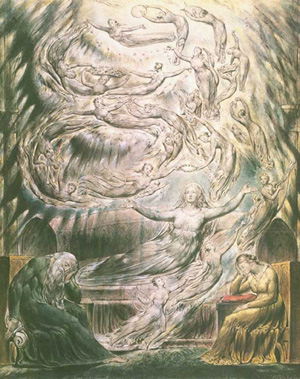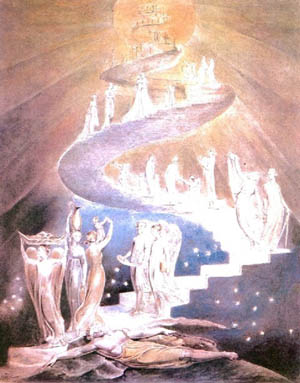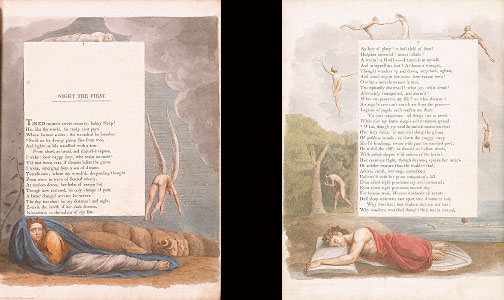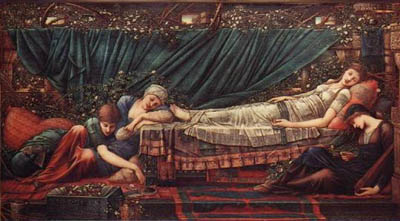|
Visionary William Blake portrayed dreams of Queen Catherine and Biblical Jacob in his distinctive mystic style, characters soaring through the heavens.


He (Blake) painted his own as "Young Night's Thoughts” (1818) with himself lying on the ground dreaming, the action of the dream painted next to him, a poem based on the same dream beneath that, and finally a straightforward account of the dream.

Blake also had recurring dreams of a supernatural art instructor, with a third eye in his forehead. The instructor showed Blake images to paint and advised him on technique. Awake, Blake made numerous oil colors of the recommended scenes. He sketched the teacher in the straightforwardly titled, "Man who Instructed Blake in Painting in his Dreams.”(1819)
Pre-Raphaelite Sir Edward Burne-Jones painted scenes of medieval knights and ladies dreaming about each other. Traveling to Rome by train, the artist fell asleep and dreamed of the nine muses on Mt. Helicon so vividly that he felt compelled to paint them the moment he arrived at his destination. Burne-Jones wrote of this painting, The Rose Bower (1870-90), “I meant to depict a beautiful dream...in a light better than any light that ever shone. . . in a land no one can remember. . .”

Soon another artistic movement was to take dream art further than the Romantics or Pre-Raphaelites had ever . . . well, dreamed.
|